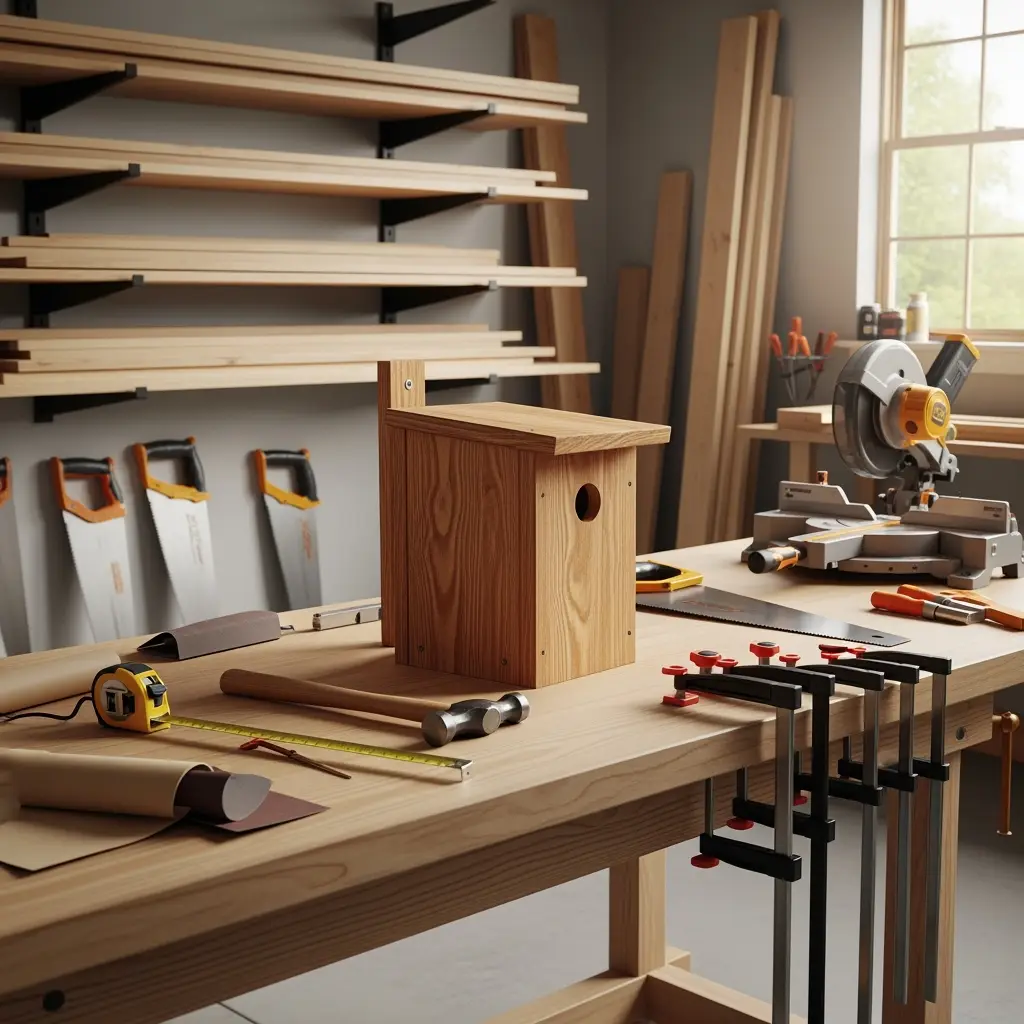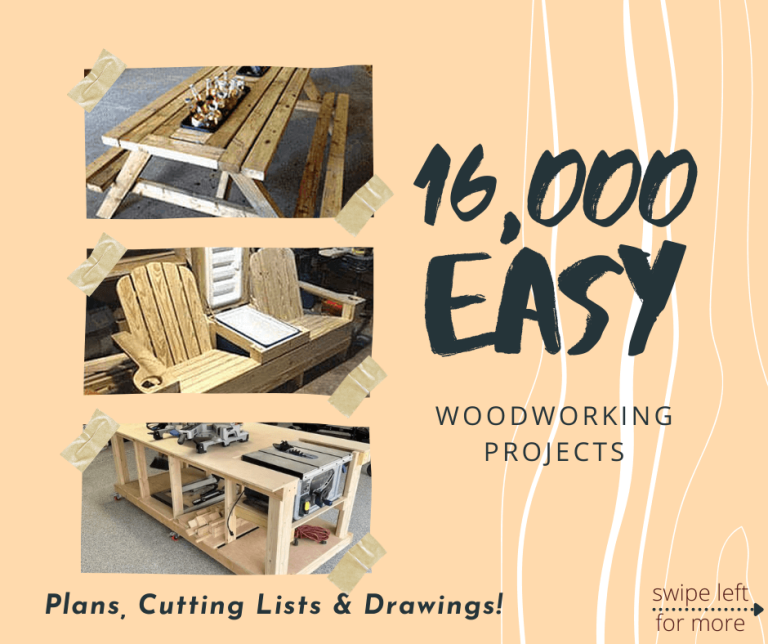Hey there, fellow makers and curious minds! If you’re here, that itch in your fingers is probably saying, ‘Let’s make cool stuff!’ Well, you’ve hit the jackpot of guides, because today we are deep-diving into the wonderful world of woodworking. Whether you’re a total rookie just trying to figure out what side of a saw to hold or a seasoned craftsman looking for some inspo, this mega guide got your back. Yeah, mistakes might happen—and trust me, they’re all part of the fun!
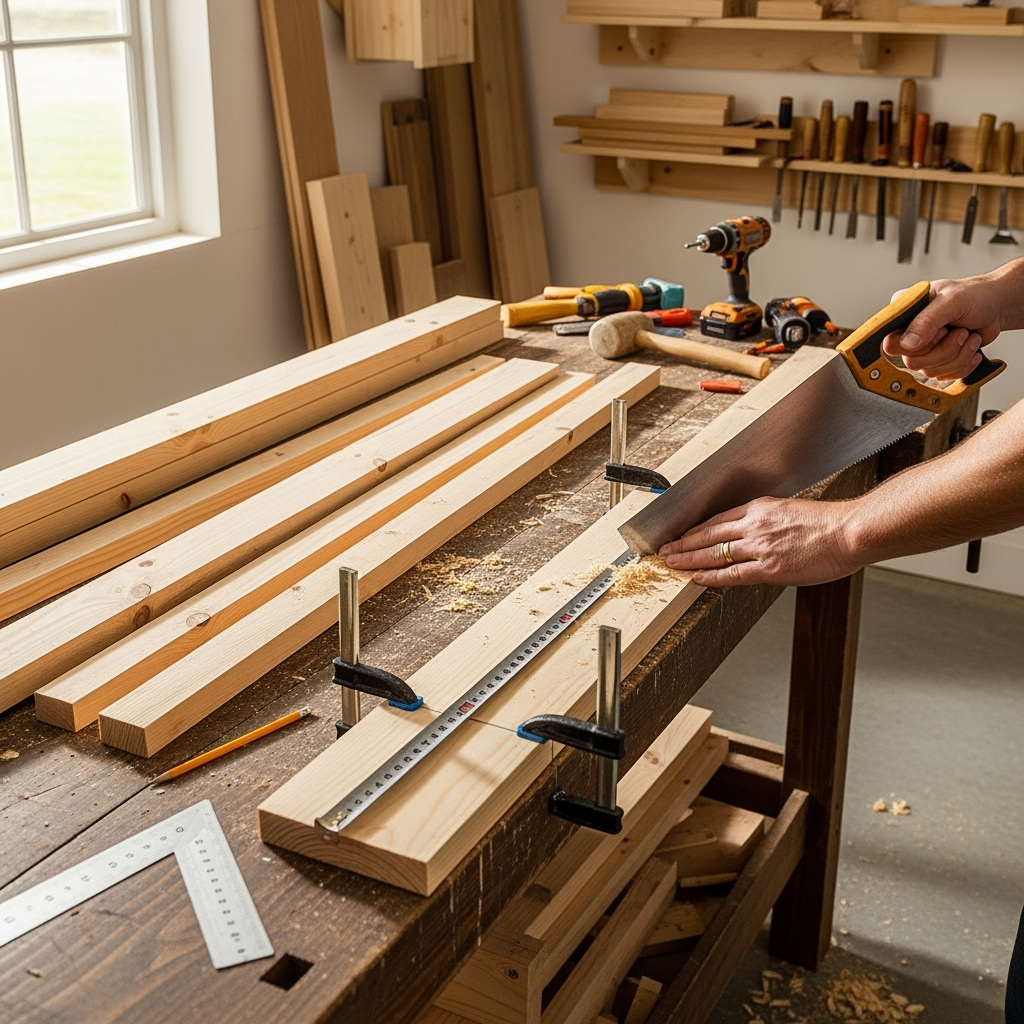
What Is Woodworking, and Why’s It So Dang Popular?
Woodworking is basically the OG of DIY—it’s all about creating and building with wood, from tiny knickknacks to massive furniture, right up to sheds that could outlast a tornado. But, what really makes woodworking blow up year after year? Simple: it gives you that magical ‘I made this with my own two hands’ buzz. Plus, you save cash, you get to customize stuff, and honestly, there’s nothing cooler than giving someone a gift you made yourself. The only risk? You’ll want to keep everything you make because it’s that satisfying.
Getting Started: Essential Tools for Woodworking
If you Google ‘woodworking tools’, don’t freak out at all the options. You really just need a few trusty basics to kick things off:
- Measuring Tape— Like, don’t even think of skipping this step! ‘Measure twice, cut once’ is the golden rule in woodworking.
- Saws— Hand saw, jigsaw, or circular saw… pick something suited for your projects.
- Hammer and Mallet— Because let’s face it, you’re gonna hit or tap something.
- Screwdrivers and Drill— Screws go in WAY smoother than nails sometimes in woodworking.
- Clamps— Trust me, nothing is worse than pieces wobbling everywhere when the glue is drying.
- Sandpaper or Sander— You want smooth—not splinters under your skin!
Once you get comfy, feel free to add more tools to your stash. For example, a router or a plane. No rush, tho; enjoy the process!
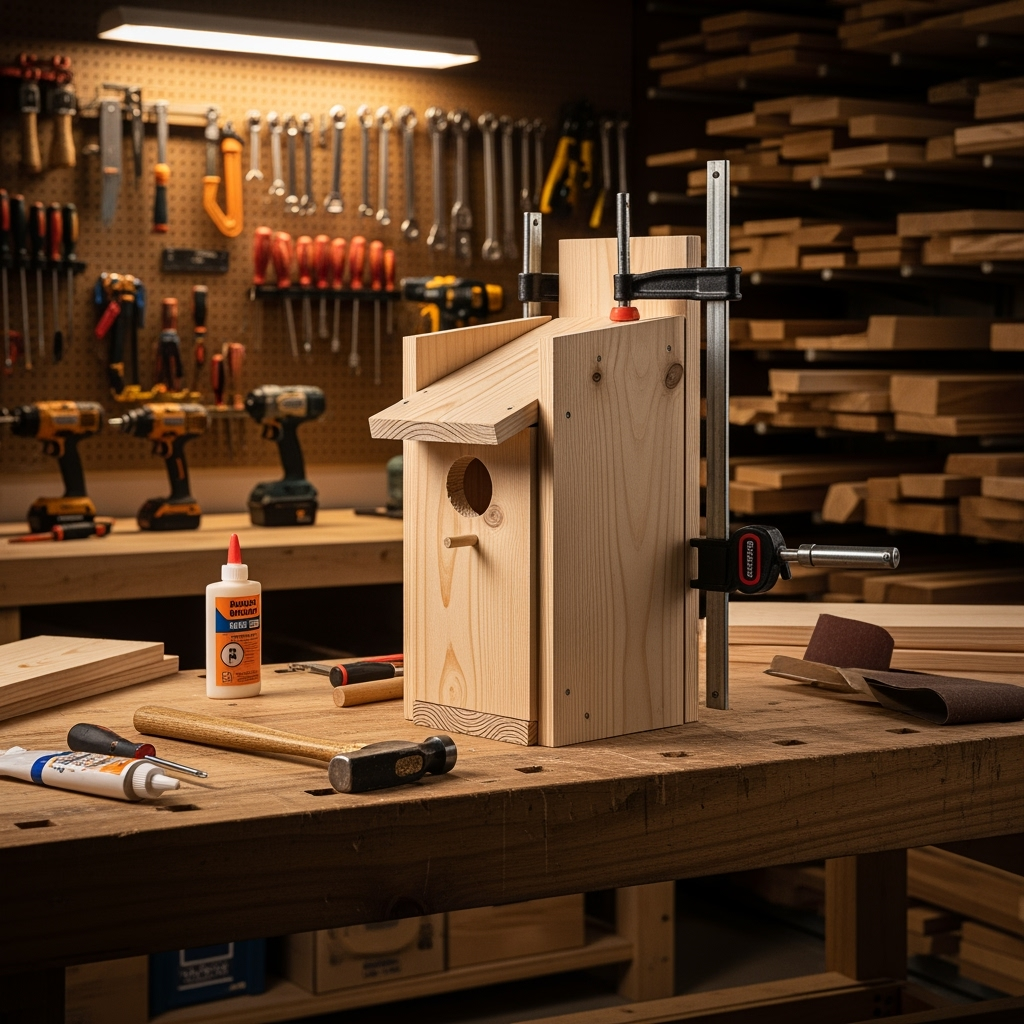
The Best Woods for Beginner Woodworkers
Let’s talk wood, literally. There are soooo many kinds of timber, but the chillest (and forgiving!) for rookie woodworking projects might be:
- Pine— Cheap, easy to find, and super simple to cut or carve.
- Poplar— Resistant to splitting. Sand it up, and it takes paint like a champ.
- Cedar— Smells awesome, plus bugs tend to hate it. Score one for cedar in storage projects.
- Oak— Pricier, but a time-honored woodworking staple. Can be a bit hard for beginners but worth the try.
Safety First, Always!
Yeah, woodworking is wild fun, but seriously—safety is the not-so-secret ingredient to keep all your fingers. Here’s what you NEED to do every single time:
- Wear goggles— Saws, sanders, drills, you-name-it toss up dust and splinters like popcorn.
- Use hearing protection— Some power tools legit sound like jet engines in your ear.
- Keep your workspace clean— Tripping on crap is lame. Clutter = accidents in woodworking.
- Don’t wear loose clothes or jewelry— Tools will eat them. End of story.
- Read your tool manuals— Yes, really. Even if it seems boring. It’s the cheat code to safer woodworking.
Simple Woodworking Projects to Start With
Not sure where to kick off your woodworking adventure? Here’s the secret sauce: Start with small wins, enjoy learning, and don’t sweat about perfection. Here are some classic beginner ideas:
- Birdhouses— Fast, functional, and pretty forgiving. Plus, birds aren’t picky clients.
- Picture Frames— Get artsy and create custom memories.
- Planter Boxes— Great for playing with basic joinery.
- Simple Shelves— There’s nothing like seeing your handiwork holding your favorite stuff on the wall.
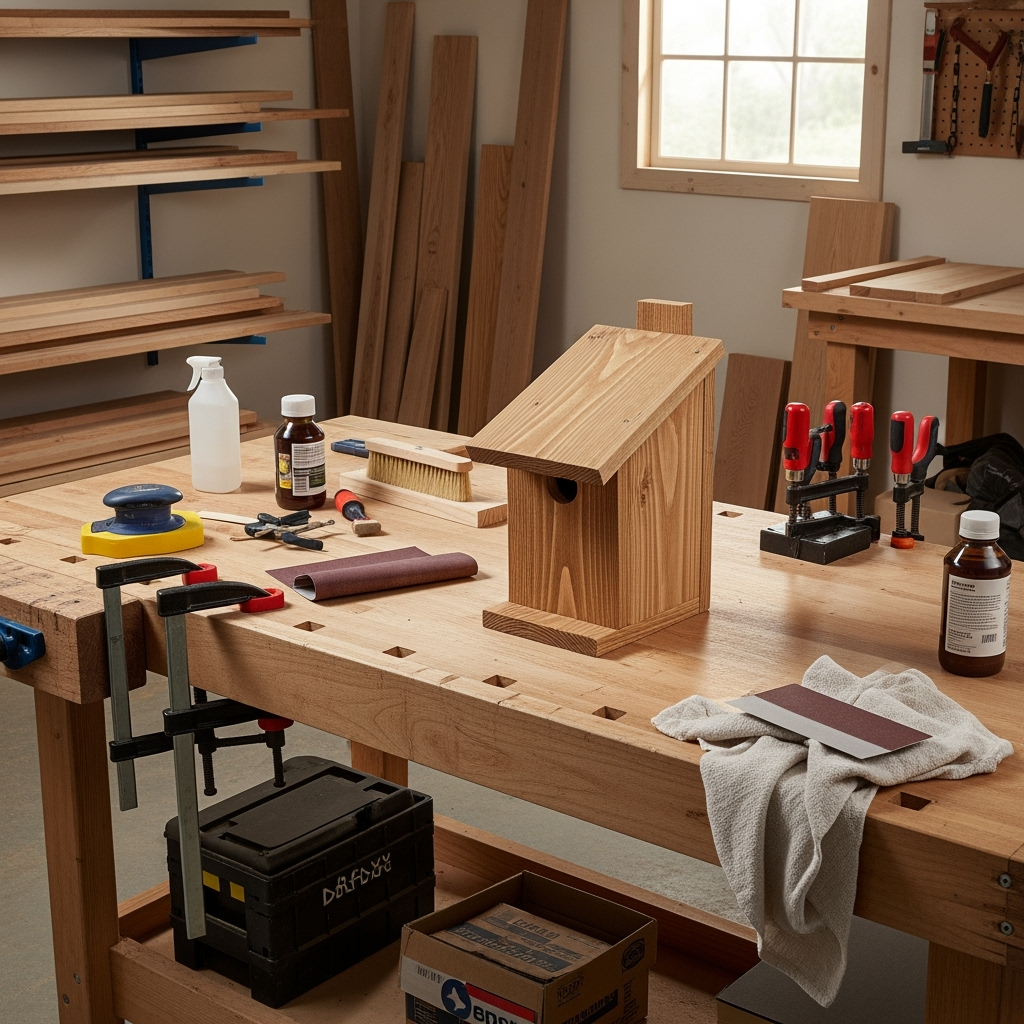
Understanding Joinery: The Backbone of Woodworking
Let’s geek out for a second. Joinery is basically woodworking jujutsu—it’s how two pieces of wood get stuck together. Some classic joints you’ll run into include:
- Butt Joints— Super basic. Two ends squared up and attached. Not the toughest, but quick and dirty.
- Dovetail Joints— Insta-level up for looks and strength. Bit tricky, but worth learning for future projects.
- Mortise and Tenon— Old school, super tough, great for frames and tables.
- Rabbet and Dado— Fancy names for grooves; good for bookshelf sides and drawers.
Finishing Techniques: Make Your Projects Pop
Once you’ve built something, don’t let it look like you found it in the dumpster. Finishing is the cherry on your woodworking project:
- Sanding— Boring but essential. Work your way up to finer grit for that smooth feel.
- Stain— Enhance the wood grain, add color and richness.
- Paint— For pop of color (or to hide rookie mistakes, no shame!).
- Sealer— Protects your hard work from water, dirt, sun, and time itself.
Just make sure you use finishing stuff in a well-ventilated space—nobody wants to get lightheaded while painting their dream build.
Organization and the Woodworking Workspace
Your woodworking spot doesn’t have to be a Craigslist castle. Even a garage corner or half a shed works fine. The secret is organization:
- Keep tools where you USE them.
- Store lumber flat to avoid warping.
- Get some small bins for screws, nails, and weird knick-knacks.
- Use wall mounts or shelves to clear up floor space.
- Sweep up sawdust often—not just for looks, but to keep your tools tidy and safe.
Level Up: Advancing Your Woodworking Skills
Nobody wakes up building epic ten-foot dining tables. Woodworking skills grow one cut and glue-up at a time. When you’re ready to level-up, try:
- Join a local woodworking club or online forum. Most folks LOVE to help out, and swapping stories (or fails) is both comforting and hilarious.
- Take a class. YouTube is wild useful for woodworking, but a hands-on class can save a ton of frustration.
- Experiment with plans. Build from free project plans, then custom tweak them to suit your style or needs.
- Give yourself legit challenges. Try something out of your comfort zone, like a drawer with dovetails or a box with a hidden hinge.
Top Mistakes Beginners Make in Woodworking (And How to Fix ‘Em!)
Everyone talks wins, but the real learning in woodworking comes from messing up. Here are the most classic mistakes—trust me, you WILL do some of these (I sure did!):
- Wrong measurements: Always triple-check, use sharp pencils, and don’t rush cutting.
- Poor sanding/finishing: Skipping the boring bits makes your final project look rough. Set aside time!
- Weak joints: If you’re making something that should hold weight, use proper joinery and wood glue (seriously, that stuff is nuts strong).
- Using the wrong wood: Not every wood is built for every gig. Soft woods dent and ding if you use them for high-wear furniture.
- Cheap tools: It’s tempting, but sometimes you get what you pay for. Invest in a few quality basics for your woodworking core tools.
- Ignoring safety rules: This is the dumbest way to cut projects (and fingers) short, so don’t be a hero—gear up.
Eco-Friendly Woodworking: Being Green in the Workshop
Lots of people ask: ‘Is woodworking bad for the planet?’ Good news—it’s actually super green if you pay attention! Here’s how to keep your karma clean:
- Source reclaimed wood. Old barn planks, pallets, and salvage yards are epic sources. Bonus: cool history and gnarly textures!
- Use unfinished or natural finishes. Beeswax, natural oils, and water-based varnishes are less toxic for you and the planet.
- Recycle scraps. Save smaller off-cuts for future projects, or donate to local schools/clubs.
- Avoid exotic woods that are endangered. Stick to commonly grown species or certified lumber (ask for the FSC label!).
Making Money From Woodworking: Side Hustle or Full-Time Dream?
Here’s the real talk: woodworking isn’t just a hobby—it can pay the bills, too. People love hand-crafted stuff, and nobody wants to buy another generic big-box shelf that falls apart in a year. Here’s how peeps turn sawdust into cold hard cash:
- Selling online. Check out Etsy, Instagram, or even your own blog. Social media is wild for finding fans and customers for your woodworking.
- Craft fairs and markets. Instant feedback from shoppers and a fun way to meet fellow makers.
- Word of mouth. Build a cool thing for a friend, and soon their friends will be blowing up your phone with orders.
- Custom furniture, repairs, and upcycling. People will pay way more than you think for unique, sturdy, or repaired pieces.
Don’t go in expecting to get rich overnight, but every journey starts with that first birdhouse or box. Set fair prices (don’t sell yourself short!), nail your photos, and share your story—people are buying a piece of your time and skill, not just wood glued in a shape.
Recommended Resources for Woodworking Inspiration
- Magazines: Fine Woodworking, Woodcraft Magazine, and Woodsmith are packed with ideas.
- YouTubers: Search for Steve Ramsey, April Wilkerson, or I Like To Make Stuff for video how-tos.
- Blogs: Ana White and The Wood Whisperer both drop project plans all the time.
- Forums: LumberJocks, Reddit’s r/woodworking—they’re pure gold for help and geeky chatter.
- Books: The Complete Manual of Woodworking, or search your local library for tons of options.
Commonly Asked Woodworking Questions
- Is woodworking expensive? Not really! Start small and build up your tool collection as you go. Loads of DIYers start with hand-me-down tools or hit up garage sales for bargains.
- How long does it take to get good? Every project, win or fail, teaches you something. The more you make, the smarter (and faster) you’ll get.
- What projects make good gifts? Picture frames, custom signs, small boxes, and even bottle openers are big hits with friends and fam.
- Should I invest in power tools right away? No need! Basics first—hand tools are way affordable and teach you technique. Upgrade as your projects (and skills) grow.
- Can I do woodworking in an apartment? If you can put up with a little dust and noise (and your neighbors don’t flip out), go for it—just start with small projects and use hand-tools.
Your Woodworking Journey Starts NOW!
If you’ve made it here, you’re officially in the woodworking fam. Don’t let gear envy, messy cuts, or Instagram-perfect projects stop you. Every saw mark and glue drop is one step closer to awesome. The only thing standing between you and a killer piece of art or functional furniture is—yup—just getting started.
So haul out that old wood, grab your tape measure, and start making! Woodworking isn’t about being perfect—it’s about enjoying the vibe, learning as you go, and maybe, just maybe, building something that’ll outlast even you. Now, what are you waiting for? Time to make epic stuff. Drop me a comment below with your favorite woodworking tip or a project you wanna try—I’d love to hear from ya! Happy building, friends!

